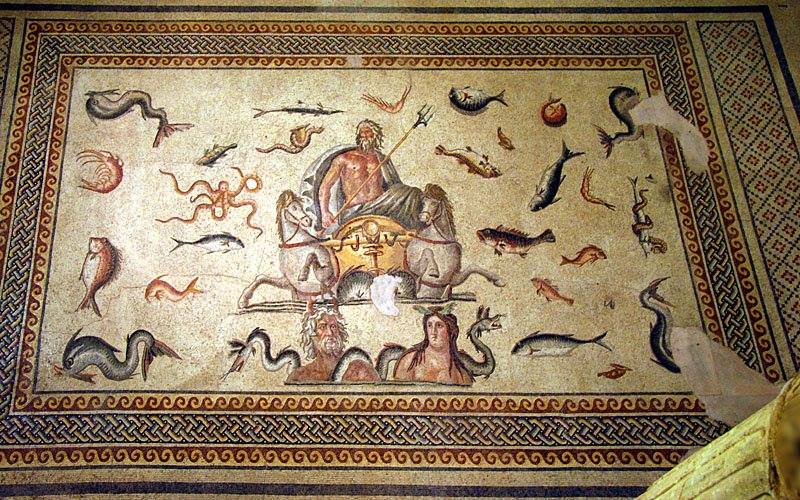In his celebrated essay entitled The Storyteller, Walter Benjamin tells us that one of the functions of fairy tales was to enable us to deal with myth:
The fairy tale, which to this day is the first tutor of children because it was once the first tutor of mankind, secretly lives on in the story. The first true storyteller is, and will continue to be, the teller of fairy tales. Whenever good counsel was at a premium, the fairy tale had it, and where the need was greatest, its aid was nearest. This need was the need created by the myth. The fairy tale tells us of the earliest arrangements that mankind made to shake off the nightmare which the myth had placed upon its chest.
 |
| Decamps: Polyphemus attacking sailors in their boat |
If myth concerns the unspeakable, the monstrous, then the character that can outwit its forces or see through its fearsome exterior can be said to be "liberated" from myth. Benjamin elaborates this idea:
In the figure of the fool it shows us how mankind ”acts dumb” toward the myth; in the figure of the youngest brother it shows us how one’s chances increase as the mythical primitive times are left behind; in the figure of the man who sets out to learn what fear is it shows us that the things we are afraid of can be seen through; in the figure of the wiseacre it shows us that the questions posed by the myth are simple-minded, like the riddle of the Sphinx; in the shape of the animals which come to the aid of the child in the fairy tale it shows that nature not only is subservient to the myth, but much prefers to be aligned with man. The wisest thing—so the fairy tale taught mankind in olden times, and teaches children to this day—is to meet the forces of the mythical world with cunning and with high spirits. (This is how the fairy tale polarizes Mut, courage, dividing it dialectically into Untermut, that is, cunning, and Ubermut, high spirits.) The liberating which the fairy tale has at its disposal does not bring nature into play in a mythical way, but points to its complicity with liberated man. A mature man feels this complicity only occasionally, that is, when he is happy; but the child first meets it in fairy tales, and it makes him happy.The contrast is between a mythic power stronger than nature and a mode of story that gives us tools to deal with mythic horror. No time to get into all that here, but for our purposes, Benjamin's thought might suggest another way to view Ulysses in Metamorphoses 13-14. The Greek hero finds the wits to escape myth's dominion, making his way back to the domestic world after having encountered and eluded a fair sampling of mythic beings, powers, and forces.
One example of those fearsome mythic beings is, of course, the cyclops Polyphemus. Ovid manages to give him two very different appearances in these books -- one as Homeric monster, the other as the violently disappointed lover of Galatea. What is Ovid up to?
 |
| Poussin: Landscape with Polyphemus |

No comments:
Post a Comment